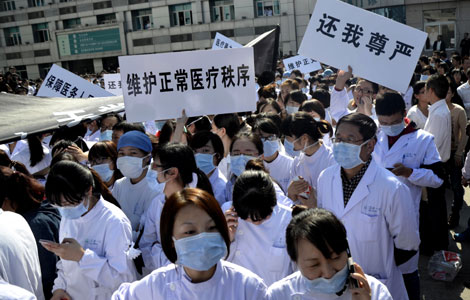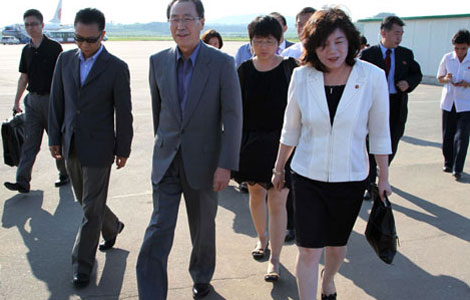China central bank boosts transparency
Updated: 2013-11-07 10:52
(Agencies)
|
||||||||
SHANGHAI - China's central bank began publishing data on a recently-launched liquidity management tool on Wednesday, in a step towards improving transparency following a cash squeeze in June that rattled global markets and sparked criticism of the bank for poor communication with the market.
The People's bank of China (PBOC) said loans outstanding under its Short-term Lending Facility (SLF) dropped to 386 billion yuan ($63.3 billion) at end-September, from 410 billion yuan a month earlier.
The PBOC launched the SLF in January, enabling commercial banks to borrow from the central bank for one to three months.
The mechanism adds a new tool for authorities to manage short-term liquidity, beyond the use of bond repurchase agreements and central bank bills sold at twice-weekly open market operations.
The SLF mechanism is modelled after the US Federal Reserve's discount window, the European central bank's Marginal Lending Facility, and the Bank of England's Operational Standing Facility.
But until Wednesday, the PBOC only published data on SLF loans quarterly. That left market participants with an incomplete picture of the central bank's operations to control the money supply. On Wednesday the bank said it will publish the data regularly on its website, www.pbc.gov.cn.
"Influenced by the increasing uncertainty of global economic and financial conditions, fluctuations of supply and demand of short-term liquidity in China's banking system has sharpened in recent years," it said in a statement published in the website.
"The PBOC created the SLF at the start of this year to manage temporary volatility of liquidity in the banking system," the central bank said in the statement, adding that operations had been conducted successfully from January to September.
As part of a crackdown on banks engaged in riskier lending, the PBOC engineered a cash crunch in late June during which some Chinese money market rates skyrocketed to 30 percent from a normal range of about 3-4 percent, setting off turmoil in financial markets globally and inciting criticism of the PBOC for failing to communicate its intentions.
The central bank has since pledged to improve. During a less severe cash crunch in late September, the PBOC convened a meeting with banks to tell them the situation, while injecting short-term money via open market operations to smooth urgent demand.
Most Viewed
Editor's Picks

|

|

|

|

|

|
Today's Top News
World to see boom in big firms
U. Michigan gets grant for China center
Lead author of Obamacare law blames govt for rollout
China's increasing role in global nuclear power
US companies in China feel squeeze
Panda cub drawing votes for her name
US, China team up for wildlife
E China still top draw for foreigners
US Weekly

|

|















